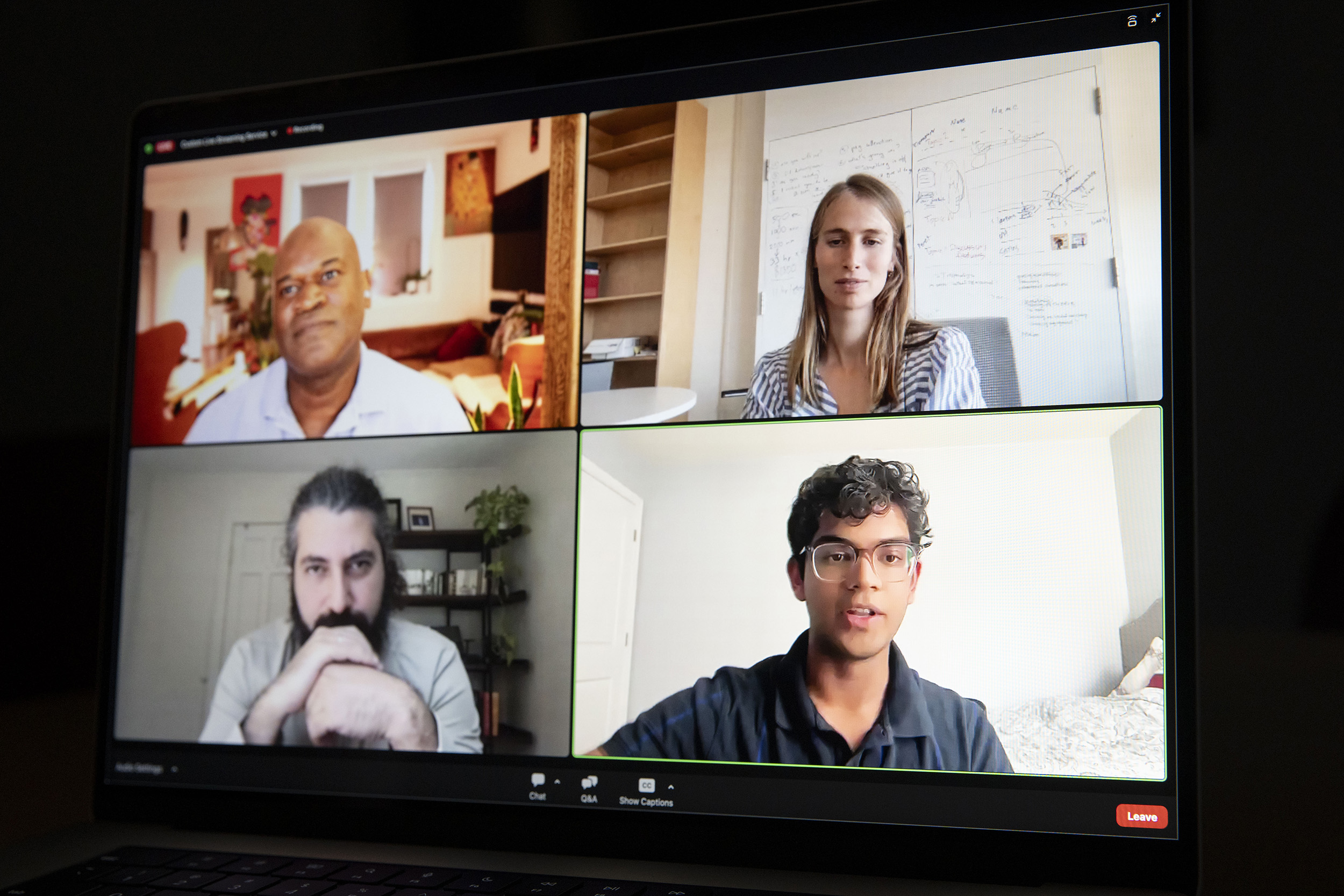
Time for teachers to get moving on ChatGPT
Students have already begun experimenting; process for finding best uses should be collaborative, Ed School panelists say
Students across the globe have been experimenting with ChatGPT, the artificial-intelligence-driven program, over the past several months. Many educators, however, remain mired in concerns about all of its potential impacts on teaching and learning.
Now a new school year is underway. Educators need to hurry up to get acquainted with ChatGPT and other AI-generated systems and start learning for themselves about the risks and benefits of using them in the classroom, said participants in a webinar sponsored by the Harvard Graduate School of Education on Wednesday afternoon.
“You have people who are really ignoring it, and that’s not a small number of people,” said Houman Harouni, a lecturer on education in the Grad School. “I’m finding far too few people who are trying to find out what this might mean. What is it that I need to learn? How can I geek out over this a little bit and be something other than a consumer or a victim of this new technology?”
Since ChatGPT was released in December, students have been using it to write essays, complete at-home tests, or do their homework in general, raising concerns about cheating but more importantly about how it could allow students to skirt engagement with the work — essentially, with learning itself.

Webinar panelists Uche Amaechi (clockwise from top left), Dora Demszky, Lakshya Jain, and Houman Harouni shared views on ChatGPT and other AI-generated systems’ place in education.
Niles Singer/Harvard Staff Photographer
Lakshya Jain, a senior at King Philip Regional High School in Wrentham, Massachusetts, who took part in the webinar, said some students are using AI to cheat, but teachers should use the new technology to make learning more challenging.
Jain said he uses ChatGPT for help with writing, but only as a tool to edit his pieces.
“People who are cheating would have cheated anyway without ChatGPT,” he said. “It’s not that ChatGPT is making cheating worse; it’s just making it easier to cheat.”
To adapt to the challenges AI poses in the classroom, Jain said that teachers could give project-based assignments or include graded discussions instead of homework that AI could complete with ease. Teachers could use AI for help with lesson planning and implementing changes in the classroom. “If you have project-based assignments or graded discussions, where there is a lot more involved, students are more engaged,” said Jain. “They learn a lot more.”
Artificial intelligence can be used to improve teaching not only by helping with lesson planning, but also by providing feedback on teaching practices, said Dora Demszky, assistant professor in education data science at the Stanford Graduate School of Education.
Teachers should use the technology to their advantage with the confidence that they still play an important role in educating students, said Demszky. Teachers provide motivation and serve as role models, something AI cannot do.
“Human teachers are essential in the process of learning,” said Demszky. “It’s not that they should be in the loop. AI should be in the loop and teachers should be in charge of them.”
It will take some time for both students and educators to develop AI literacy skills and establish a framework for a responsible, productive use of AI-generated tools, but it is time to act, said Demszky.
Webinar host Uche Amaechi, lecturer on education at the Harvard Graduate School of Education, asked panelists for advice for teachers on how to overcome their fears around AI. Harouni responded that students and teachers should work together. AI will undoubtably affect the learning process, he said, but both students and teachers should feel empowered to engage with the new technology.
Said Harouni, “The best thing that we can do as teachers is to go to students and say, ‘Here’s the technology. This is how much I understand, and this is the impact it is going to have on your work,’ and ask, ‘What do you think? Where can we go with this?’”
A video of Experimenting With AI in the Classroom is available here.




